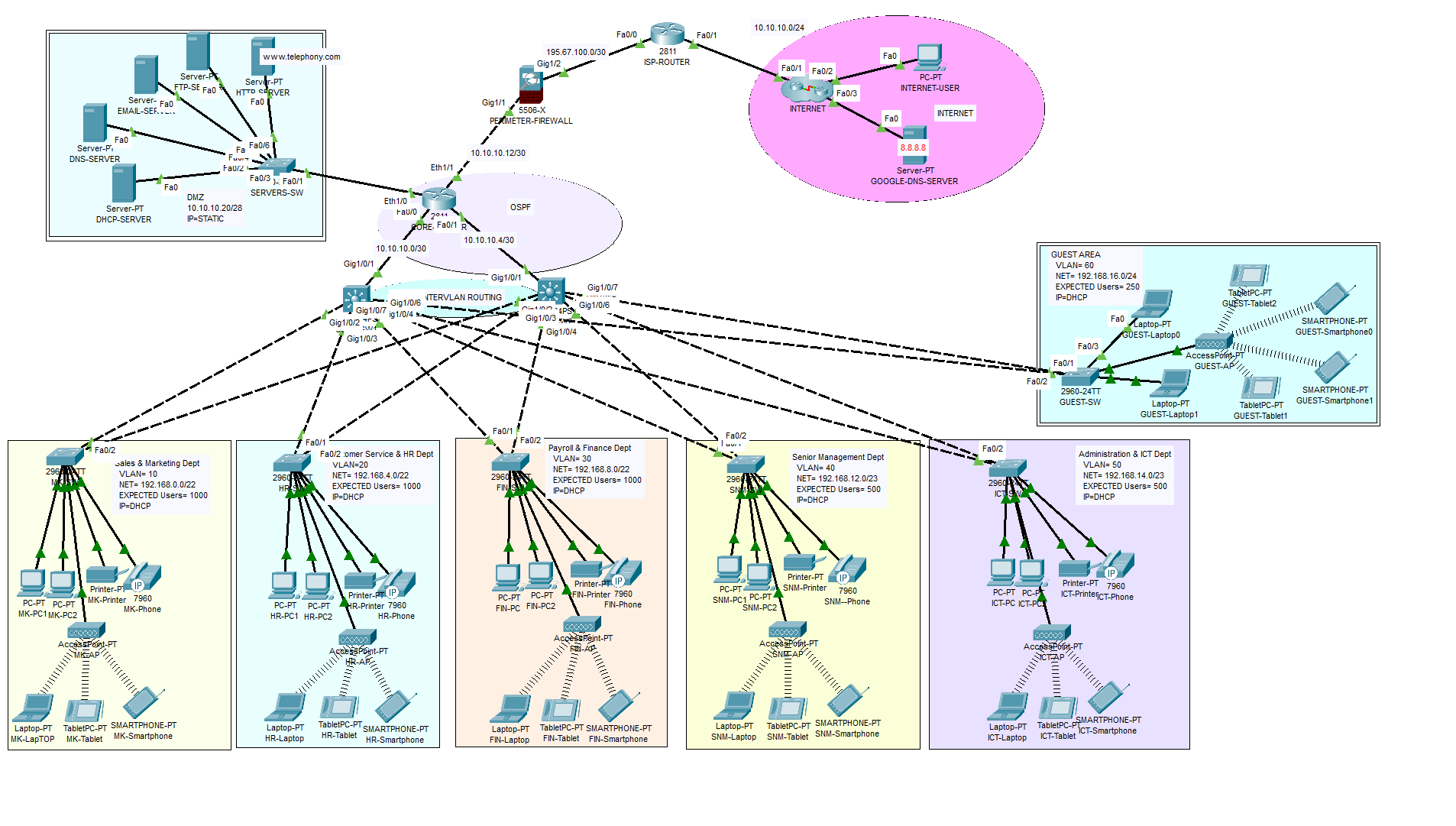Secure Telephony Company Network System Design and Implementation
Scenario Description: Secure Telephony Network:
The telephony company aims to upgrade its existing network infrastructure to accommodate future growth and ensure high-performance, secure, and scalable communication systems. Projections estimate a user base of 1000 employees in both the Sales & Marketing and Customer Service & HR departments, 1000 employees in Payroll & Finance, 500 employees in Senior Management, and 500 employees in Administration & ICT. To support this anticipated growth, the network design employs robust strategies, ensuring seamless communication, reliable performance, and adaptability for future technological advancements.
The upgraded network leverages VLANs to segment departments, improving traffic management and securing sensitive data such as payroll and financial records. Dynamic IP addressing via DHCP ensures efficient allocation of IP resources across the 4000 projected users while allowing flexibility for new devices. High Availability and Redundancy are prioritized through protocols like HSRP to minimize downtime, and OSPF ensures optimized routing across departmental and branch networks. Advanced security measures, including firewalls at the head office and encryption protocols, protect against potential threats.
To meet communication needs, VoIP telephony systems are implemented across all departments, supporting seamless internal and external calls. Additionally, the design incorporates backup servers to maintain continuity in case of primary server failures and file transfer protocols for efficient data sharing. This upgraded telephony network is designed to scale alongside the company’s growth, ensuring long-term reliability and high-quality communication.
-
- VLANs: Network segmentation for improved traffic management and security for each department.
- Dynamic IP Allocation (DHCP): Efficient IP management for 4000 projected users.
- Static IP for Servers: Ensuring consistent connectivity for critical services.
- HSRP (Hot Standby Router Protocol): Redundancy to maintain high availability and minimize downtime.
- OSPF (Open Shortest Path First): Optimized dynamic routing for inter-departmental and branch communication.
- VoIP Telephony Systems: Seamless voice communication across internal and external networks.
- Firewalls: Advanced protection at the head office to secure network traffic.
- Encryption: Secure data transmission across the network.
- Backup Servers: Ensuring continuity of services in case of main server failures.
- File Transfer Protocols: Secure and efficient data sharing between departments.
The network topology below satisfy the user requirements above and everything is verified, tested and working fine.
